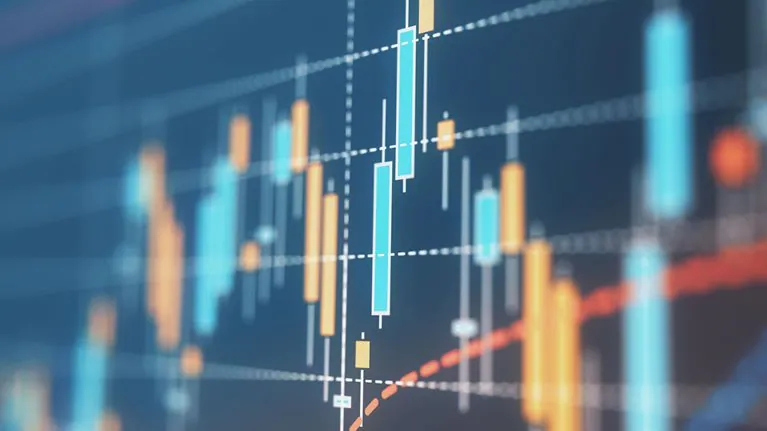Commodities
Invest into ETFs on soft commodities: cocoa, coffee, corn, wheat, sugar, soybean, and fruit.

What is commodity trading?
Every person driving a car can be easily influenced because of increasing price on oil or shortfalls, as well as
soybean supply due to drought, can impact the overall composition of our next mealtime. What is commodity
trading? Commodities typically move in opposition to shares whether for the long term or as a strategy to set
aside cash during the unusual bearish or volatile stock market.
Commodity trading advisor and other tools
Initially, many investors may have hesitated to invest in commodities due to the significant capital, expertise, and time required, often relying on a commodity trading advisor for guidance. However, the landscape has changed, offering multiple avenues for commodity trading through various platforms and online services. Today, commodity markets are more accessible, allowing novice investors to participate via user-friendly commodity trading platforms.
Currently, the commodities market plays a vital role in the global trade system. For investors interested in online commodity trading, a practical understanding of commodities is essential. With in-depth knowledge of the factors that influence commodity prices, investors can capitalize on trading opportunities and earn profits. It’s crucial for them to grasp the mechanics of trading in the commodities market to navigate it effectively.
2017
Minimum deposit is 200 USD
You can begin trading with just $200 in your account.
2018
Leverage is up to 1:20
Trade soft commodities with leverage of up to 1:20.
2019
More than 100 ETFs on soft commodity markets
CAFE, CORN, SGAR, SOYB,
and other ETFs on soft
commodities.
2020
Cutting-edge trading platform
Trade through the
innovative generation MT4
& MT5.
If you’re familiar with commodity trading, let’s delve into commodity options. Commodity options are a convenient and effective way to participate in the futures markets. For example, options on futures allow traders to leverage their positions while managing risk effectively.
An investor can develop a trading strategy in the commodities market using a mix of long and short call and put options. This approach, tailored to meet specific needs and expectations, is known as an option spread. It’s important to remember that the possibilities are vast and will vary based on the investor’s goals, time horizon, risk tolerance, and market conditions.
Now, let’s cover the basics of commodity options and how they function. Like other derivative contracts, commodity options are financial instruments based on an underlying asset. In simple terms, trading commodity options means having choices about whether to “hold” the commodity today. Instead of buying or selling the commodity immediately, the decision is postponed to a future date when the actual transaction will occur. The underlying assets can include stock indices, forex, shares, commodity futures, commodities, debt instruments, or bond indices.
When you sign an insurance contract, you agree to pay a premium to protect yourself from unforeseen events. This premium typically covers vehicles, life, property, or crop insurance. Similarly, options require you to pay a premium to shield yourself from unexpected price fluctuations. These unique financial instruments grant the buyer the right, but not the obligation, to buy or sell the underlying asset.
Options can be bought or sold at a specified price on or before a predetermined date, for which the buyer pays a premium. There are two parties in an options trade: the buyer and the seller. The buyer pays the premium for the right to purchase, while the seller receives the premium and is obligated to sell if the buyer decides to exercise the option. If exercised, the buyer is referred to as the option holder, and the seller is called the option writer. Just like insurance contracts have an expiry date, options also have a maturity date. As the options contract approaches its expiration, the premium typically decreases.
The advent of online commodity trading platforms has made these markets accessible to private investors, allowing them to tap into global markets with a modest amount of capital. The commodities market is rapidly emerging, presenting significant opportunities for substantial profits. Commodity trading companies assist new investors on these platforms by employing various methods to fund their trading activities. Different firms utilize diverse funding strategies, which involve different ratios of debt maturities and types.
Just as there are countless ways to prepare a single vegetable, there are numerous commodity option trading strategies available in the commodities market. Any strategy you choose should align with your risk appetite and personality. In simple terms, if you have a low tolerance for risk, prefer a more straightforward approach, and do not have an aggressive personality, you should avoid high-risk commodity futures trading strategies.
If you ignore this advice and pursue high-risk strategies, you may face unexpected and poorly timed liquidations of your trades, leading to illogical emotional decisions that could further impact your trading outcomes.
The best time to utilize options is often during periods of extreme price fluctuations. When commodities markets rise from long-standing lows or fall from highs, traders are presented with exceptional opportunities. However, it’s essential to remember that just because a commodity appears “cheap,” it doesn’t guarantee that its price won’t decrease further. Similarly, being bullish on a commodity option when prices are at their peak is typically not advisable.
While prices may continue to rise in such scenarios, options are often overpriced. Price extremes can persist, but they won’t remain high indefinitely, as market conditions will eventually push prices back toward equilibrium.
Caution is warranted at extremely high or low price levels; sometimes, a counter-trend trade can be advantageous. For instance, during an all-time high, call options may be overpriced, while put options could be surprisingly inexpensive. Ultimately, the best approach depends on your risk tolerance and individual circumstances.
Start Deposit
Ready to experience the safety and security of Dfxone? Open an account today and join thousands of traders who trust us with their investment needs.
Start now